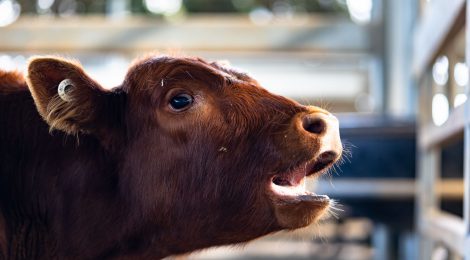
“Bawling” Good, “Stale” Bad: How Feedlots View Calves Says a Lot About Animal Agriculture
Canadian market reports appear in the agricultural newspapers weekly and provide the price animals sold for at livestock auctions the previous week. Buyers at these sales have coined terms for the animals they are bidding on. “Bawling” calves (ie. those just torn from their mother’s side and crying out for them) are considered desirable and worth purchasing. Calves deemed “stale”, “dead-haired” or those who have “lost their bloom” (ie. are depressed, skinny and weak because they have been crying and pacing for their mothers for two to three weeks) sell at a discounted price.
Feedlot buyers want calves fresh in their trauma as the auction process, handling, loading and unloading, transport, and ultimately, “processing” back at the feedlot in the form of vaccinations and painful mutilations such as dehorning and castration are well recognized as causing stress, weight loss and compromised immunity. For maximum profit, feedlots need animals to put on weight quickly, in spite of all of the trauma they’re enduring from being taken away from their mother. A “bawling” calf still has enough strength to cry out so is seen as worth banking on; a “stale” calf doesn’t, and so he/she is seen as likely to be a “poor doer” and therefore not as profitable.
It is difficult to believe livestock producers when they say they love their animals when they exploit animal suffering to their financial advantage.


